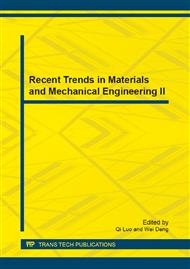p.85
p.92
p.99
p.107
p.114
p.118
p.123
p.129
p.134
Self-Assembly of Asymmetrical Diblock Copolymers Confined in Carbon Nanotube
Abstract:
We present molecular dynamic (MD) simulations to model and simulate the self-assembly of asymmetrical diblock copolymers (DCP) confined in carbon nanotube (CNT). The strength of the attractive interaction is systemically varied to examine effects on the self-assembled morphologies. The aim of our study is to understand how the surface energy and cohesive energy affect the structure. The dependence of the chain conformation on the strength of the surface preference is reasonably explained. The energetics is discussed qualitatively and used to account for the appearance of the complex morphological transition.
Info:
Periodical:
Pages:
114-117
Citation:
Online since:
September 2013
Authors:
Keywords:
Price:
Сopyright:
© 2013 Trans Tech Publications Ltd. All Rights Reserved
Share:
Citation:


